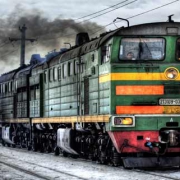LNG sellers will become more like widget makers
High fuel prices have caused the shale gas boom and there is no end in sight. When the dust settles, sheer entrepreneurial forces will have transformed the planet. The golden age of gas is just about to begin.
The EIA predicts that the US will be the biggest oil producer worldwide by 2020. And by the same breath, they say that Natural Gas will be big too. We all know the scenarios by which US-based LNG producers will swamp the world in cheap LNG derived from American shale. Shale has already killed the aspirations of some oil and gas producers who saw in America the market of the future. But now the game takes a whole new quality.
For a starter – shale gas extraction technology would never have been pushed to the efficiencies and the cheapness today if it would not have been for the oil and gas price rally we have seen over the past 10 years. In a way, big oil and gas and the producing countries have caused their own pain by pricing their exported energy at a premium.
Generally said, any market abhors scarcity and price pressures. The reason for those high prices to subsist for many years at a time in the energy industry is the time lag between new reserve appraisal and first new oil and gas. Developing upstream resources is expensive and takes a lot of development time. The same can be said of the colossal investments necessary to bring the collaterals such as refineries up to speed.
When I was a natural gas freshman I have seen a very impressive presentation at one of my first energy conferences. The presenter affirmed that if the price of oil stays above a certain threshold for a certain amount of time, massive investment ensues which in itself will lead to overproduction and hence lowers prices. Lower prices, in turn, will kill further investment, effectively deflating the bubble which in turn leads to scarcity and hence to rising prices. And the eternal merry-go-round takes another turn.
In oil and gas, this very same dynamic is playing out but one turn on the carousel takes more than a decade. In the LNG world, we like to call that buyer’s market and seller’s market respectively. A buyer’s market is a situation when buyers are in an economic position to dictate terms of the commercial engagement and a seller’s market is when the seller comes out on top. Usually, buyers markets are longer and deeper and seller’s markets are short-lived.
I have never accepted that terminology. A real market is always a so-called buyer’s market. In a real market environment, sellers compete for the fickle customer just like a supermarket chain tries to pull you in with all kinds of juicy offers. And as competition keeps the market healthy it will ensure that the seller behaves nicely enough.
Some might argue that natural resources are no normal market as their exploitation depletes the planet. But that argument is flawed as any other activity depletes the planet too. If I am a baker, I make bread from flour which makes me deplete the earth’s flour stock. This, in turn, depletes the grain stock which is a natural resource as it took limited nitrogen and minerals resources in order to grow the grain. Besides, grain is a resource that is pulled from the earth. Should normal market mechanisms therefore not apply?
Energy is no different except that there is an eternal influx of energy into the biosphere called sunlight. By that logic, energy should be harder to deplete than any other thing – at least theoretically.
Back to LNG. What was said before shows clearly that the so-called seller’s market for LNG will – what do I say – MUST come to an end. The question is not even when but: what caused the longest LNG seller’s market in human history in the first place?
The answer is simple. A combination of
- the normal end of a buyers cycle
- together with liberalization in Europe
- together with the plateauing of some legacy fields
- together with vastly increased consumption from the BRIC countries and some others
- together with Fukushima and the sudden nuclear exit of Japan
- and a load of other micro reasons
No matter what fantastic explanation some might pull out of their sleeves for the current dilemma, it’s still the usual cycles. Nothing more.
The Stone Age did not end for the lack of stone. Mesopotamia was famous for having little stone available so people moved away from using stone tools and invented copper tools. The new technology spreads quickly to the then known world and ended the Stone Age everywhere even as there was no shortage of stone in all those areas.
LNG sellers, therefore, will have to learn a few new tricks. It’s not back to the good (bad) old days when an IOC ran their business and they stood by and watched. Instead, they must develop new products and keep up with an ever-changing, split-second world. Sitting back and watching good things happening is not going to work anymore. Dabbling in trading is not going to help either.
Like a widget maker, LNG sellers must think hard about how to make their product offering more enticing to buyers. Some will compete on price, others on offering niche products, others again on unflinching customer loyalty and who knows, there might be an LNG equivalent of Apple out there showing everyone that LNG can be sexy. It’s a new world that beckons.
Should buyer’s then sit back and wait. No way as competition happens on all levels and when the tide turns, you want to be ready.














Leave a Reply
Want to join the discussion?Feel free to contribute!